Case 18
- ‘Why don’t you…’
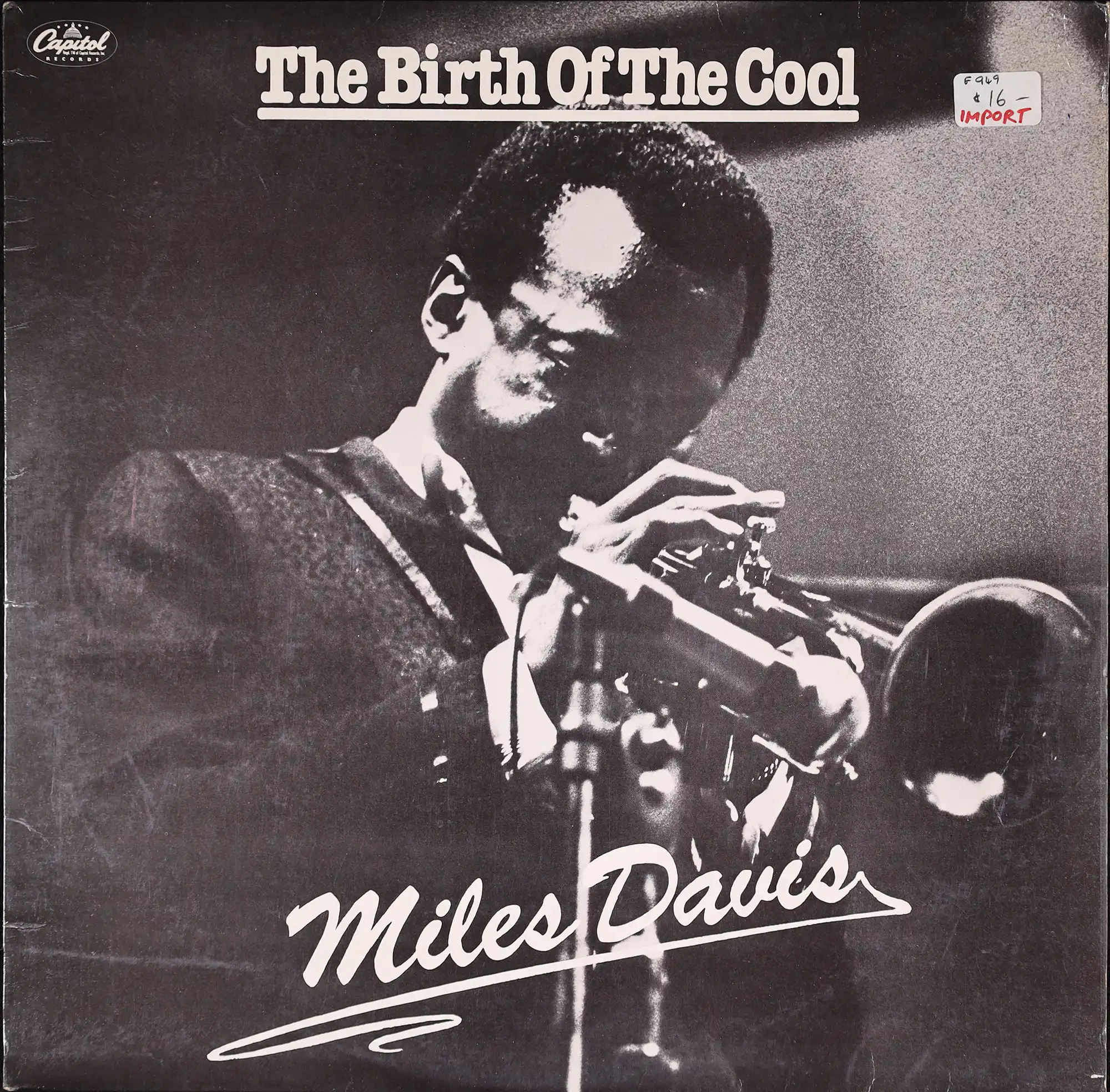
Miles Davis, The birth of the cool. Hayes, Middlesex: EMI Records Ltd, c.1970. SPRH Hotere Vinyl
In 1986, Hotere was funded to appear at a New York art show. He travelled with art critic Hamish Keith and while there he met Max Gimblett, the artist. While not enjoying the razzle-dazzle of New York, he did enjoy one thing: attending a live Miles Davis concert. Jazz trumpeter Davis was a particular favourite of his and no doubt tracks like ‘Moon Dreams’ and ‘Venus de Milo’ pumped out at Forth and Castle Streets and Harbour Terrace. As always, the painting continued.

Miles Davis, The birth of the cool. Hayes, Middlesex: EMI Records Ltd, c.1970. SPRH Hotere Vinyl
Open image in new window
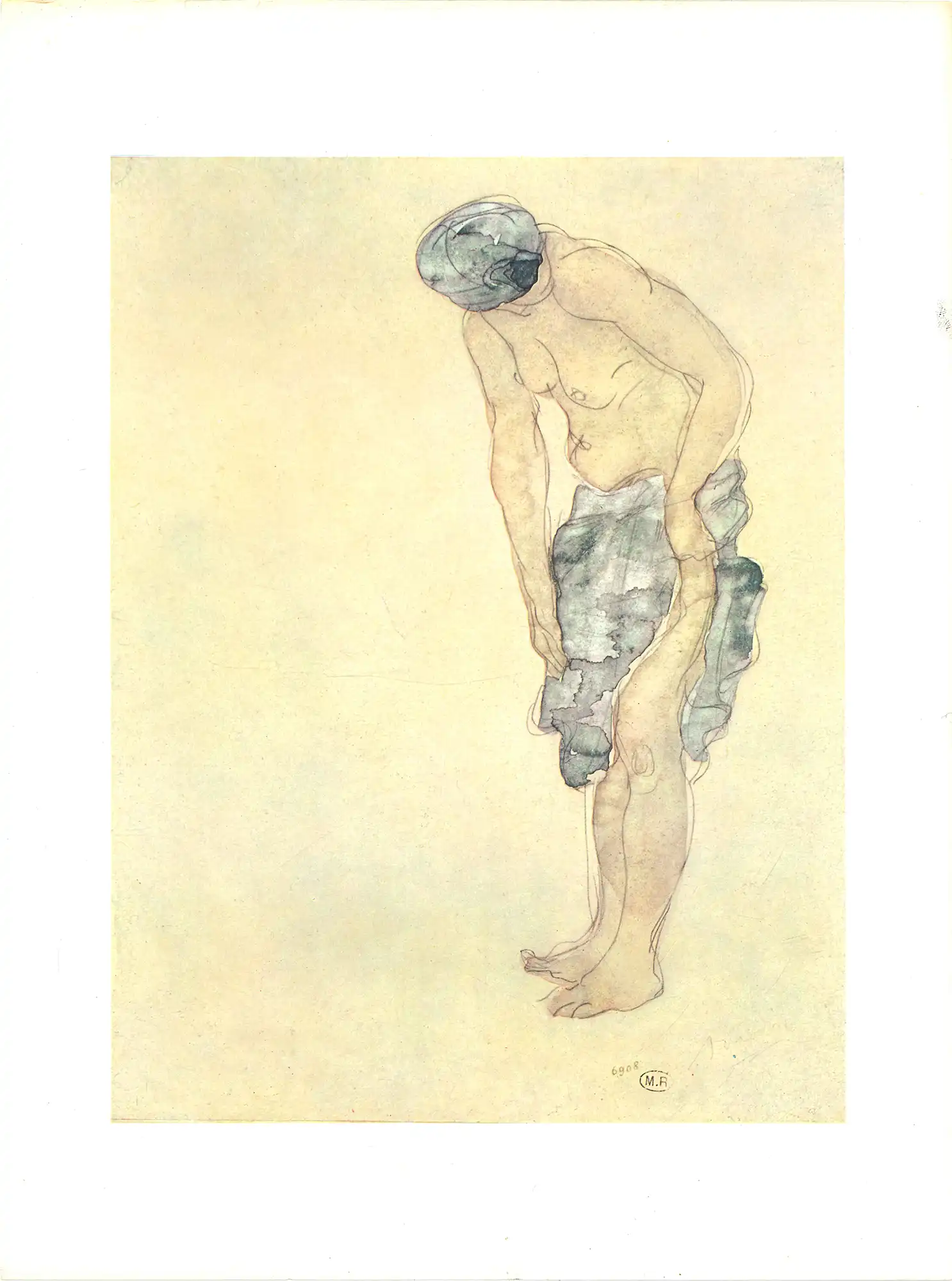
(6908 Femme à sa toilette, aquarelle) from Madame Cécile Goldscheider (Compiler), Rodin. Aquarelles et dessins. Paris: Editions Albert Morancé, 1963. SPRH 730.92 ROD (GOL)
While in Paris in 1978, Hotere purchased a portfolio containing copies of twenty-four watercolours and drawings by the French artist and sculptor Auguste Rodin (1840-1917). Most are crayon sketches that are like Hotere’s own figurative work (see Baker, The desire of the line, 2005). Others are delightful colour washes such as the one on display: ‘Femme à sa toilette’ (no.6908), from the Collection du Musée Rodin in Paris. Although signed and dated, this portfolio is the only one in Hotere’s library that has a printed ownership label. It gives his P. O. Box in Port Chalmers and a fax number.

(6908 Femme à sa toilette, aquarelle) from Madame Cécile Goldscheider (Compiler), Rodin. Aquarelles et dessins. Paris: Editions Albert Morancé, 1963. SPRH 730.92 ROD (GOL)
Open image in new window
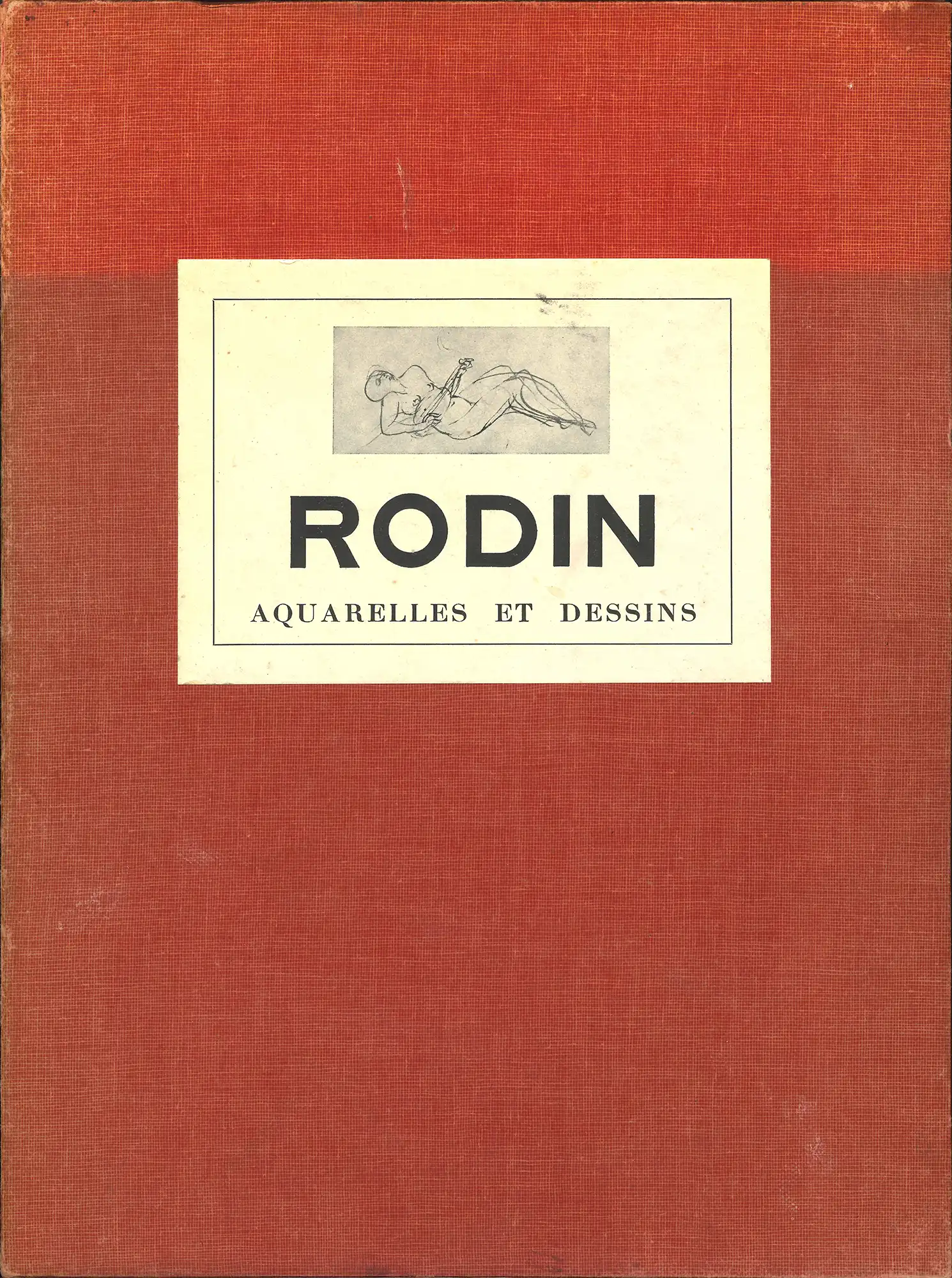
(6908 Femme à sa toilette, aquarelle) from Madame Cécile Goldscheider (Compiler), Rodin. Aquarelles et dessins. Paris: Editions Albert Morancé, 1963. SPRH 730.92 ROD (GOL)

(6908 Femme à sa toilette, aquarelle) from Madame Cécile Goldscheider (Compiler), Rodin. Aquarelles et dessins. Paris: Editions Albert Morancé, 1963. SPRH 730.92 ROD (GOL)
Open image in new window
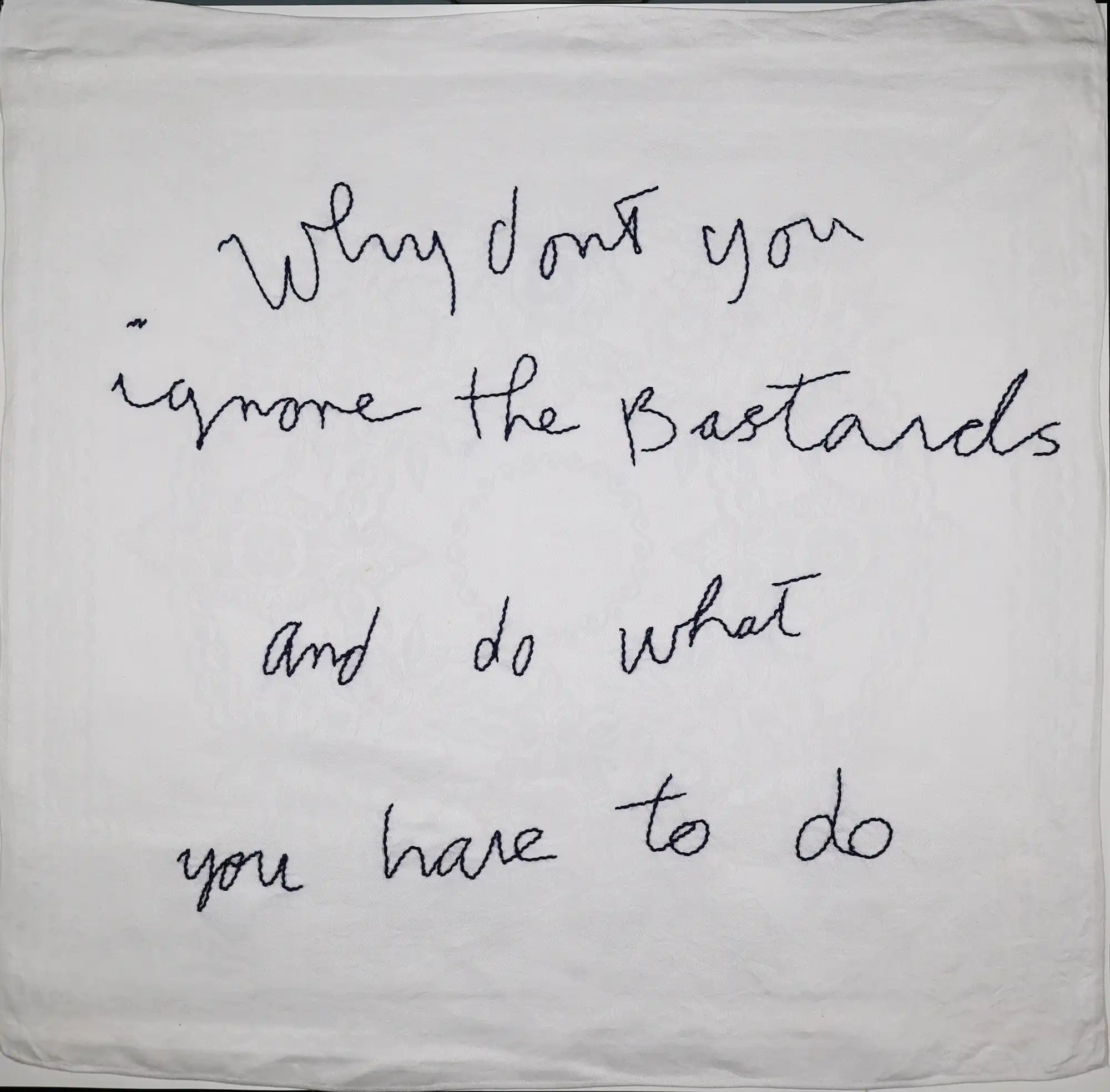
‘Why don’t you…’, embroidered cloth, c. 2010. Private Collection
According to Pamela Gordon of the Janet Frame Trust, Janet Frame did not like people turning up at her door without prior notice. Her set policy was ‘No unsolicited visitors’. According to Mary McFarlane, Hotere appropriated the phrase making it ‘No Ambush Visitors’, which became part of his lingua franca, especially in the post-stroke phase. He continued to write phrases down on large napkins and in order not to lose them, McFarlane embroidered the text of each, following his hand. There were some twenty in total. One other fine example of their collaboration in visual textuality is in the carrell to the right (case 18): ‘Why don’t you…’.
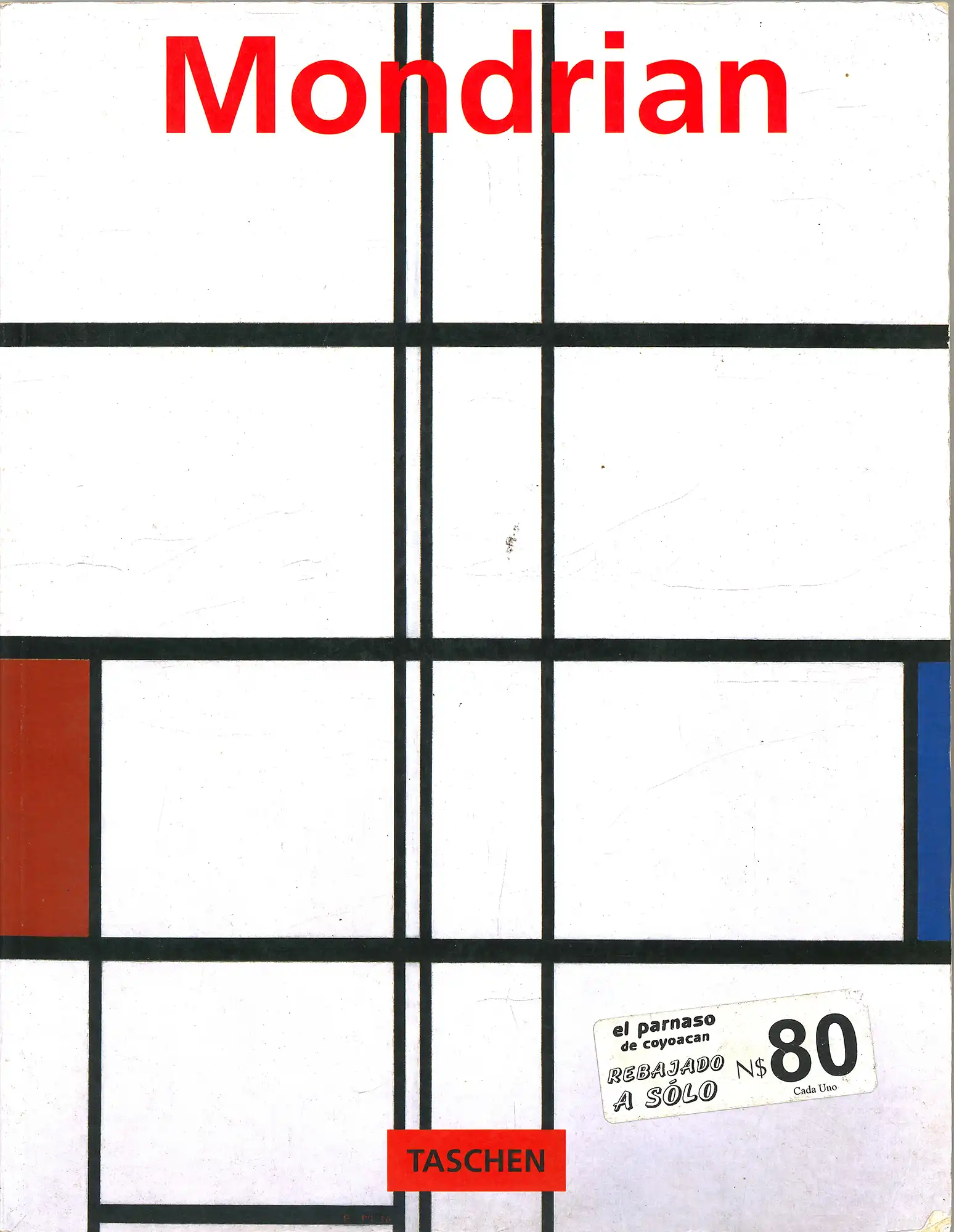
Susanne Deicher, Piet Mondrian 1872-1944. Composición sobre el vacío. Cologne: Benedikt Taschen, 1995. SPRH 759.9492 MON (DEI)
The Dutch painter Piet Mondrian (1872-1944) was one of the pioneers of abstract art and his simple geometric work was an enormous influence in movements such as Abstract Expressionism and Minimalism. Indeed, to some Mondrian is Modernism. On his trip to Cuba (funded by art collector Alan Gibb) in 1996, Hotere passed through Mexico City. This gave him a chance to view the great murals of socialists Orozco, Siqueiros, and Rivera. He also took the opportunity to obtain this ‘reduced for sale’ copy of Deicher’s work on Mondrian.

Susanne Deicher, Piet Mondrian 1872-1944. Composición sobre el vacío. Cologne: Benedikt Taschen, 1995. SPRH 759.9492 MON (DEI)
Open image in new window
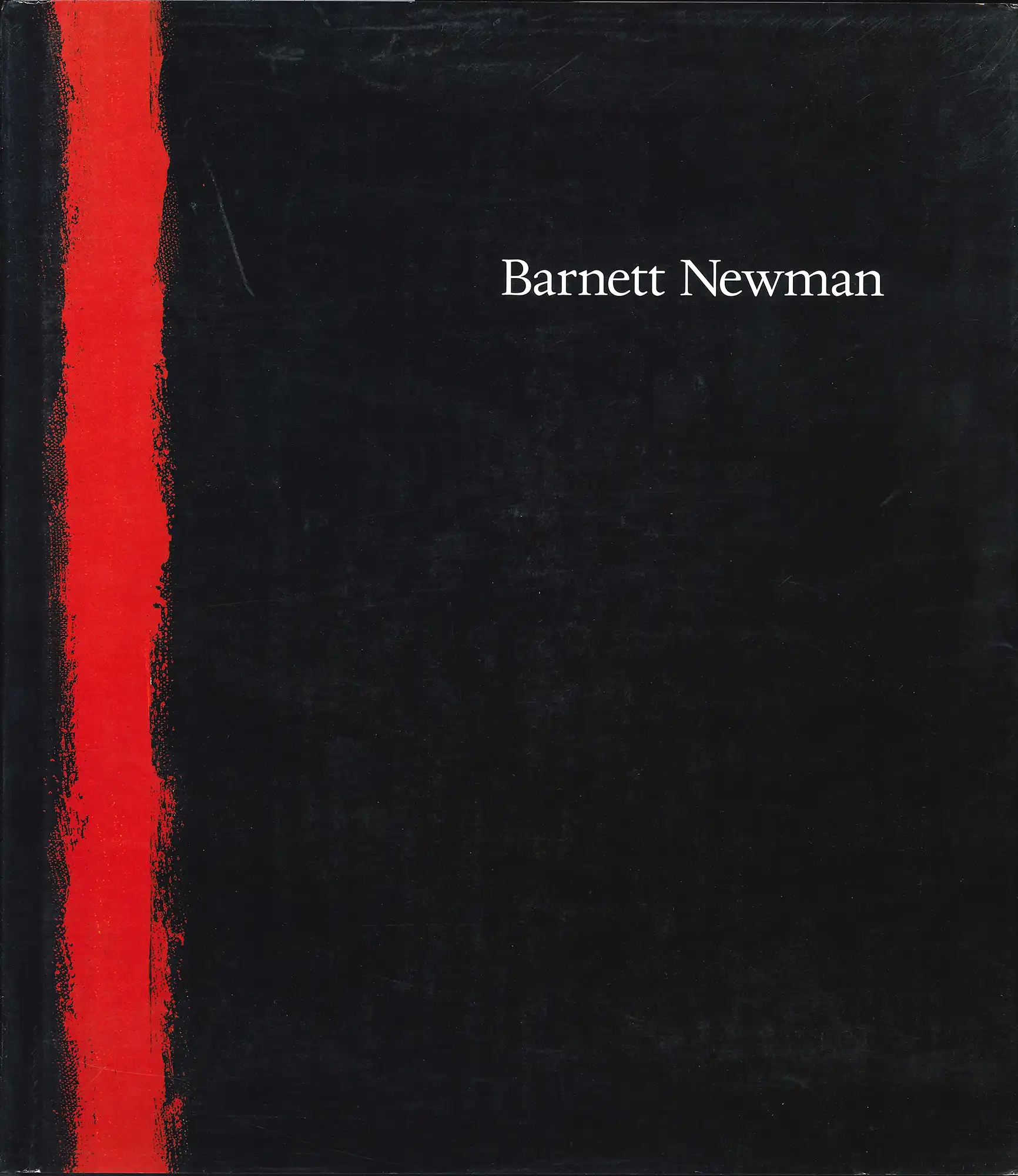
Ann Temkin (Ed.), Barnett Newman. Philadelphia, Pennsylvania: Philadelphia Museum of Art and Yale University Press, 2002. SPRH 759.13 NEW
During his collaborative work with Christchurch artist Marian Maguire, Hotere often spoke to her about the American abstract artists that had excited him so much as a young man. They were Ad Reinhardt (1913-1967), Mark Rothko (1903-1970), Robert Motherwell (1915-1991), and Barnett Newman (1905-1970). According to Maguire, they were to him his touchstones for ‘honesty and purity in their work’ (O’Sullivan, 288). Even the cover of this richly-packed book on Newman and his work is deceptively simple, yet evocative.

Ann Temkin (Ed.), Barnett Newman. Philadelphia, Pennsylvania: Philadelphia Museum of Art and Yale University Press, 2002. SPRH 759.13 NEW
Open image in new window





